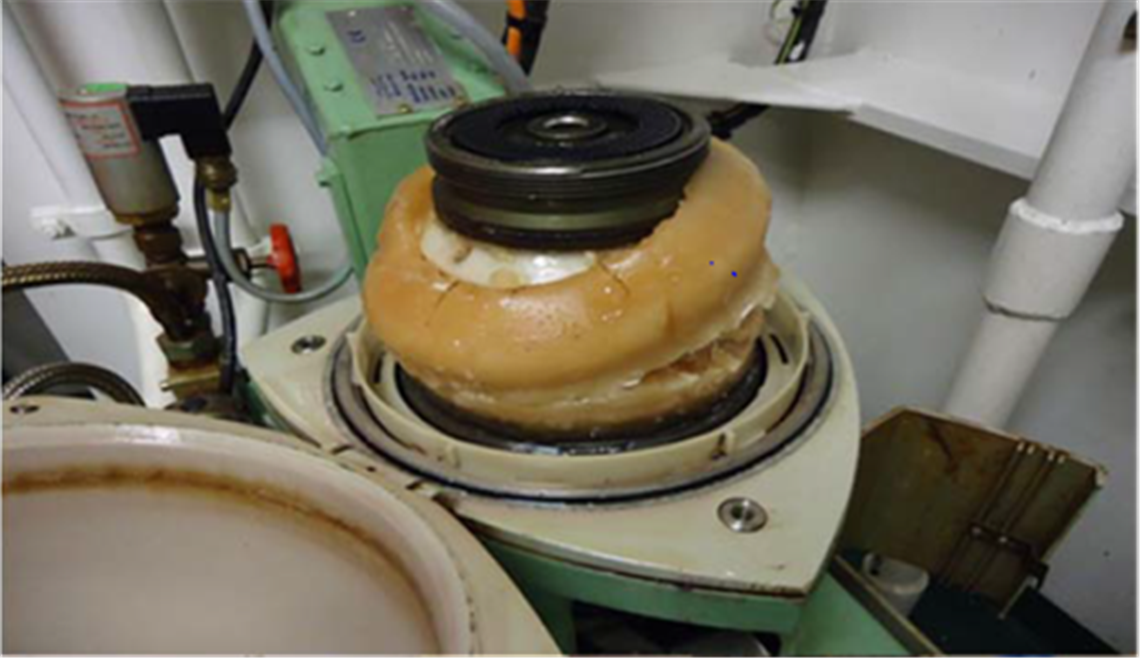Unplugging Marine Fuel Waxing Issues
01 April 2016

With the introduction of the current emissions control areas (ECAs) in January 2015, all vessels sailing in the Baltic Sea, North Sea, English Channel and the North American ECA, which incorporates most of U.S. and Canadian coast and much of the Caribbean, must reduce sulfur emissions by using distillate fuels with less than 0.1% sulfur content.
The distillate option has proved popular for its relative simplicity and cost effectiveness, but it does come with challenges, particularly during cold weather operation when paraffin wax buildup can be an issue. Paraffin is an essential component of petroleum fuel products, offering good combustion properties and burning well within engines. However, exposure to low temperatures can cause crystallization, forming wax particles that can accumulate in fuel tanks and block fuel filters. The result of this is potential risks for engine shut down.

One solution for waxing problems is the routine use of distillate fuel treatments. Wilhelmsen Ships Service (WSS), has developed a distillate fuel treatment range and offers its Unitor DieselPower CFPP as a way to vastly improve the cold flow properties of distillates.
“The increased use of low sulfur distillate fuels, and the growing number of loss of power (LOP) incidents, is creating greater awareness of the wax issue,” said Jonas Ostlund, product marketing manager, Oil Solutions, WSS. “A key issue is that fuels with only slight differences of the same grade can react very differently at cold temperatures — some flowing freely, while others have catastrophic effects on fuel filters. It is complex and creates confusion.”

It’s therefore vital, Ostlund said, to have a clear picture of both the temperatures vessels will be operating in and the characteristics, quality and specifications of the fuel to be used.
“There are three measurable stages related to wax formation in distillates that should help owners and operators make informed choices,” said Sachin Gupta, business manager, Oil Solutions, WSS. “The three stages of a fuel are the cloud point (CP), the cold filter plugging point (CFPP) and eventually the pour point (PP). It is vital to be aware of these stages and to know the exact temperature at which a fuel will enter the first two of these three phases.”
Ostlund said that CP is the point when the wax particles, which have formed, actually become visible causing a clouding or hazing in the fuel. “The CP should act as the first and final warning and a very clear indication that action has to be taken,” Ostlund said. “And CFPP is the point of no return and effectively marking the temperature at which the buildup of wax crystals stops fuel from passing through a filter. The PP is arguably the least useful of the three measures, as it indicates the temperature, at which fuel turns solid and a vessel’s engines would have stopped operating before the PP is reached.”
Gupta said that “distillate fuel treatments, like our DieselPower CFPP, don’t have any impact upon the CP, but both the CFPP and PP can be extended by the use of cold flow additives.
“The additive contains a unique mixture of cold flow improvers together with a wax anti-settling additive to ensure that no sediment is formed,” he said. “It’s simple to use — being added prior to the filling of fuel tanks— and is dosed 1.0 L to 1000 L of fuel.”
WSS said its CFPP treatment might not be the cheapest fuel treatment available and the relatively high dosage is to ensure that the additive physically delays the waxes from forming. This also means that the additive needs to be added before the vessel enters into a cold weather area, since the treatment needs to be present when the waxes start to form to have a good effect. It does not help to add the treatment after the waxes has formed.
“However, this kind of treatment represents a minimal cost for maximum peace of mind, when it comes to cold climate operations,” said Ostlund. “It can help keep vessels safe, when temperatures approach the limits a fuel can tolerate. It should along with knowledge of CP, CFPP and projected operating temperatures, become second nature within engine rooms.”
STAY CONNECTED




Receive the information you need when you need it through our world-leading magazines, newsletters and daily briefings.
POWER SOURCING GUIDE
The trusted reference and buyer’s guide for 83 years
The original “desktop search engine,” guiding nearly 10,000 users in more than 90 countries it is the primary reference for specifications and details on all the components that go into engine systems.
Visit Now
CONNECT WITH THE TEAM









